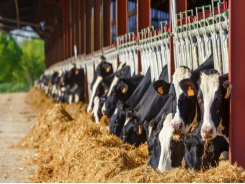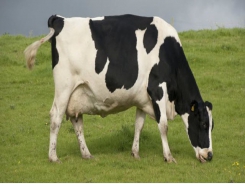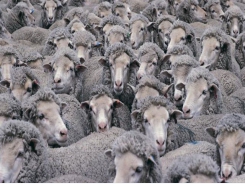Genetic study to target bovine babesiosis in cattle

NAU geneticist awarded $500,000 USDA grant to prevent tick-borne cattle fever.
Geneticist Joseph Busch, an associate director of NAU’s Pathogen & Microbiome Institute, is one of the world’s leading experts on the genetic makeup of cattle fever ticks. Photo: Credit: Northern Arizona University.
Bovine babesiosis, or cattle fever, was once one of the worst diseases afflicting the U.S. livestock industry. Although the tick-borne parasite Babesia bovis was largely eradicated in the mid-20th century through a systematic U.S. Department of Agriculture program to eliminate the ticks, bovine babesiosis remains endemic in Mexico, where more than 60% of beef calves have been exposed to Babesia parasites, according to Northern Arizona University (NAU).
As ticks develop resistance to pesticides, however, and infected stray cattle move across the border, the disease is at risk of being reintroduced into cattle populations in southern Texas. There is no vaccine for bovine babesiosis, which causes anemia, fever and death in 70-90% of adult cattle that were not exposed to the parasite as calves. Virtually all U.S. cattle are naïve to the parasite, which makes them highly susceptible, NAU said.
Joseph Busch, an associate director of NAU’s Pathogen & Microbiome Institute (PMI), is principal investigator of a new three-year study to develop genetic tools to prevent bovine babesiosis from becoming re-established in the U.S. With more than 12 million head of cattle in Texas alone — and an estimated 94 million nationwide — the stakes are high.
“The goal of this project is to secure the sustainability and competitiveness of the U.S. cattle industry,” Busch said.
Funded with a $500,000 grant from USDA, Busch and co-principal investigator David Wagner will collaborate on the three-year project with scientists from USDA’s Agricultural Research Service (ARS) and Animal & Plant Health Inspection Service (APHIS).
Acaricides — pesticides specifically formulated for ticks — remain the single most effective means of preventing cattle fever ticks from entering the U.S., the researchers said. Also, some livestock producers use anti-tick vaccines for their cattle to kill the ticks before they can transmit bovine babesiosis.
Busch and his team will characterize genetic mechanisms of resistance to acaricide chemicals and will identify genetic variation in tick genes that are high-priority candidates for anti-tick vaccine targets. DNA fingerprinting techniques developed through years of research by Busch, Wagner and others in PMI will help provide data on the ticks, including whether the ticks sampled from Texas ranches are genetically related as well as their resistance to acaricides.
“Acaricides and anti-tick vaccines are the two primary management tools used to prevent cattle fever ticks and their diseases from entering the U.S.,” Busch said. “Our project will provide critically needed information to our APHIS collaborators who depend on these management tools.”
APHIS inspectors, called tick riders, ride horses along the Rio Grande on the U.S.-Mexico border looking for stray cattle that may carry the disease. They rope the cattle and direct them into a quarantine zone, where the ticks are sampled and shared with researchers at ARS and NAU. The quarantine line has been breached repeatedly in recent years, and tick populations are moving northward, where they infest healthy cattle.
Busch, who has published more than 50 articles in scholarly journals, is one of the world’s leading experts on the genetic makeup of cattle fever ticks.
Có thể bạn quan tâm
Phần mềm

Phối trộn thức ăn chăn nuôi

Pha dung dịch thủy canh

Định mức cho tôm ăn

Phối trộn phân bón NPK

Xác định tỷ lệ tôm sống

Chuyển đổi đơn vị phân bón

Xác định công suất sục khí

Chuyển đổi đơn vị tôm

Tính diện tích nhà kính

Tính thể tích ao hồ




 AB Vista looks to boost fiber use in…
AB Vista looks to boost fiber use in…  Research challenges thinking on lamb survival
Research challenges thinking on lamb survival